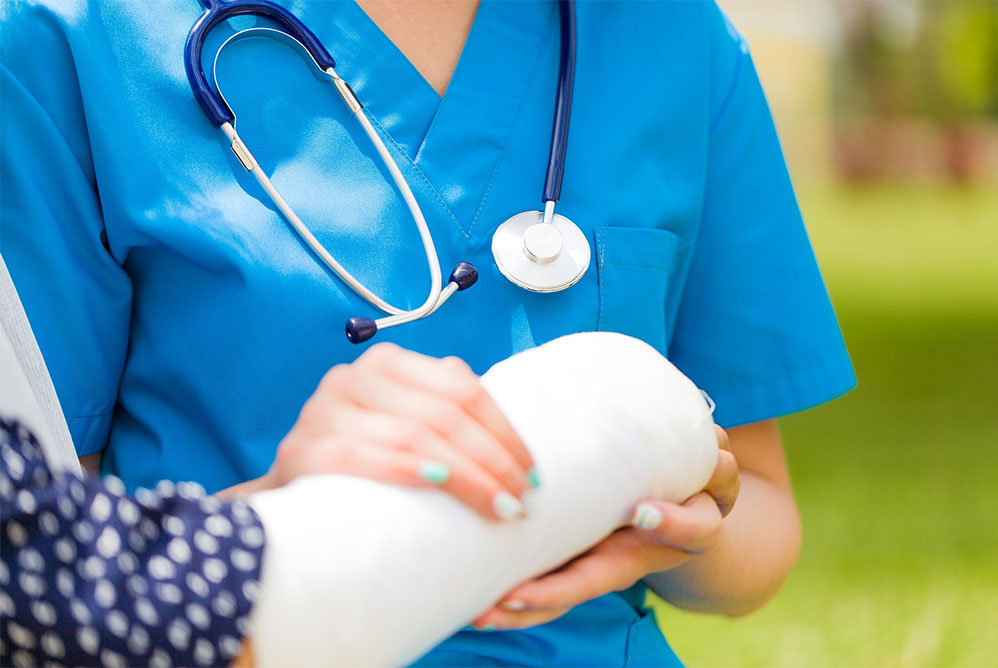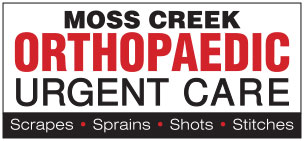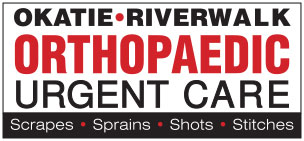BRACING, SPLINTING & CASTING
Casts and splints are orthopedic devices that are used to protect and support broken (fractured) or injured bones and joints. They help to immobilize the injured limb to keep the bone in place until it fully heals.
Casts differ from splints because they provide more support and protection for a limb that is injured or broken. They are made from materials like plaster or fiberglass that can be easily molded to the shape of the injured arm or leg.
Splints, also known as half-casts, provide less support than casts, but are faster and easier to use. They also can be tightened or loosened easily if the swelling in the arm or leg increases or decreases.
The three common causes of fractures or broken bones are:
- Trauma. Motor vehicle accidents, falls, sports injuries, etc. account for most fractures.
- Osteoporosis. Individuals with osteoporosis, a disease that results in the “thinning” of the bone, are susceptible to fractures because their bones are more fragile.
- Overuse. Simple overuse of a limb may result in stress fractures, which can be common among athletes.
Types of fractures:
- Closed or simple fracture: The bone is broken, but the skin is not lacerated.
- Open or compound fracture: The skin may be pierced by the bone or by a blow that breaks the skin at the time of the fracture. The bone may or may not be visible in the wound.
- Greenstick fracture: Fracture on one side of the bone, causing a bend on the other side of the bone.
- Comminuted fracture: A fracture that results in three or more bone fragments.
Treatment for fractures:
Your provider may choose to place you in a splint or cast to hold your arm or leg in place while the fracture heals. Depending on the type and severity of your fracture, surgical procedures may also be necessary to hold the broken bone in proper position by using metal plates, pins or screws. Your splint or cast may feel awkward at first, but how you care for your cast can play a big role in the healing process.
Recovery & Rehabilitation:
Depending on the extent of your injury, a fracture can take several weeks to several months to heal. The pain usually stops long before the bone has healed enough for you to resume normal activity. Limiting your activity even after your cast or brace is removed may be necessary until the fracture is solid enough to handle the stresses of normal use. You will also lose some muscle strength during the healing period because they haven’t been used. Your ligaments may also tighten up and become stiff from not using them. A period of rehabilitation involving stretching and exercise may be necessary before those tissues perform normally and the healing process is complete.
Cast Removal:
DO NOT REMOVE THE CAST YOURSELF. You may cut your skin or prevent proper healing of your bone. Call our office if you feel like your cast is loose or may need to be changed. Should your doctor want to remove the cast at your follow-up appointment, a cast saw will be used. The saw blade vibrates, but does not rotate. Cast saws are noisy, and the vibrating blade may cause warmth from friction, but will not harm you or cut your skin.
Many sports related, overuse or acute injuries respond well to RICE treatment: Rest, Ice, Compression and Elevation.
In addition, many patients need to have their injury stabilized in order for the injury to heal appropriately.
For the convenience of our patients, we stock some of the most common orthopedic bracing and medical equipment:
- Wrist and Hand Braces
- Lumbar/Spine Supports
- Knee Ligament and Patella Femoral Bracing
- Ankle Braces/Post OP Shoes
- Crutches/Slings



